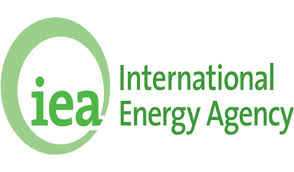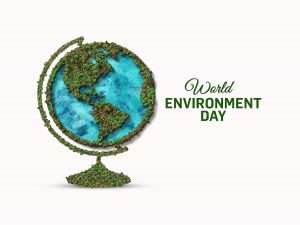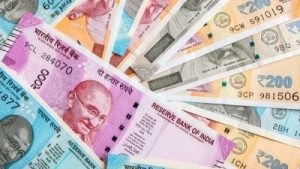Today Current Affairs: 6th June 2021 for UPSC IAS exams, State PSC exams, SSC CGL, State SSC, RRB, Railways, Banking Exam & IBPS, etc
Table of Contents
Operation Sagar Aaraksha-II.:

Indian Coast Guard (ICG), in coordination with Sri Lankan authorities, has been tirelessly engaged in fighting a major fire on board the Chemical laden container vessel MV X-Press Pearl anchored off Colombo since 25 May 2021.
- The coordinated joint operation between India and Sri Lanka undertook to respond to potential environmental danger has been christened as Sagar Aaraksha-II.
- Indian Coast Guard ships, including the specialised pollution response vessel Samudra Prahari and offshore patrol vessel Vajra are on standby in vicinity to respond to the developing situation.
- The ICG being an active member of South Asia Co-operative Environment Programme (SACEP) remains committed to its responsibility of safeguarding of the ocean environment in the region.
International Maritime Dangerous Goods (IMDG)
- The vessel when caught with fire was carrying 1486 containers containing chemical cargo classified as International Maritime Dangerous Goods (IMDG).
- Among other chemicals, the IMDG cargo consisted of highly inflammable Nitric Acid, Methanol, Methyl Acetate, Sodium Hydroxide and Polystyrene beads.
Hisaab Ki Kitaab:

Union Minister of Corporate Affairs launched “Hisaab Ki Kitaab”.
- Hisab Ki Kitaab is a series of 6 short films/modules of Investor Education & Protection Fund Authority (IEPFA).
- It has been developed by CSC eGov as a part of their training tool.
- There are 6 short films/ modules of 5 minutes duration each highlighting the importance of budget, saving, importance of Insurance schemes, various social security schemes of the government etc. thus promoting Financial literacy.
About IEPF Authority:
- Parent body: Union Ministry of Corporate Affairs.
- Established in: 2016.
- Status: A statutory body under Companies Act 2013.
- Mandate: The Authority is entrusted with the responsibility of administration of the Investor Education Protection Fund (IEPF), make refunds of shares, unclaimed dividends, matured deposits/debentures etc. to investors and to promote awareness among investors.
- Administration: Secretary Ministry of the Corporate Affairs is the Chairperson of the Authority.
World Energy Investment Report, 2021:

The International Energy Agency (IEA) published the World Energy Investment Report, 2021.
Increased Investment in Energy Sector:
- Global energy investment is expected to rebound in 2021 and increase 10% year-on-year to around USD 1.9 trillion.
- Most of this investment will flow towards power and end-use sectors, shifting out of traditional fossil fuel production.
- The scenario is perfectly aligned with the projection that global energy demand will rise 4.6% year-on-year in 2021, offsetting its contraction in 2020.
Renewable Energy:
- Renewable power will have the largest share – around 70% of the total will be spent on new power generation capacity.
- There will be substantial gain of renewable energy as the future energy outlook has been dependent on technological development, well-established supply chain and demand from consumers for carbon-neutral electricity.
Fossil Fuels:
- Upstream (production and exploration) investment in oil is expected to grow 10%.
- This expansion in fossil fuels was planned with novel technologies like Carbon Capture and Storage (CCS) and bioenergy CCS, which are yet to attain commercial success.
- The increment of coal-fired power in 2020, mostly driven by China, is indicating that coal is down but not yet out.
Increased Emissions:
- The above positive scenarios will still not deter the increase in carbon dioxide emission, after a contraction in 2020 mainly due to economic slowdown induced by the novel coronavirus pandemic.
- Global emission is set to grow by 1.5 billion tonnes in 2021.
- Many developing nations’ supporting policy and regulatory frameworks are not yet aligned with long-term net-zero goals.
- Net-zero emissions refer to achieving an overall balance between greenhouse gas emissions produced and greenhouse gas emissions are taken out of the atmosphere.
- In many Emerging Market and Developing Economies (EMDEs), investment in renewables was hit harder by Covid-19 than in developed nations – and now many EMDEs have prioritized coal and oil in recovery plans.
Black Carbon And Glacier Melting:

The report titled “Glaciers of the Himalayas: Climate Change, Black Carbon and Regional Resilience” says that the glaciers are melting faster than the global average ice mass. However, the strong policy on black carbon can sharply cut glacier melt.
- The research report is released by the World Bank and covers the Himalaya, Karakoram, and Hindu Kush (HKHK) mountain ranges.
About Black Carbon:
- BC is a short-lived pollutant that is the second-largest contributor to warming the planet behind carbon dioxide (CO2).
- Unlike other greenhouse gas emissions, BC is quickly washed out and can be eliminated from the atmosphere if emissions stop.
- Unlike historical carbon emissions it is also a localised source with greater local impact.
Source of Black Carbon in Himalayan Region:
- Industry (primarily brick kilns) and residential burning of solid fuel together account for 45-66% of regional anthropogenic (man-made) BC deposition, followed by on-road diesel fuels (7-18%) and open burning (less than 3% in all seasons) in the region.
- Impact of Deposits of BC:
- It acts in two ways hastening the pace of glacier melt:
- By decreasing surface reflectance of sunlight.
- By raising the air temperature.
Rate of De-glaciation:
- The rate of retreat of HKHK glaciers is estimated to be 0.3 meters per year in the west to 1.0 metres per year in the east.
- Full implementation of current policies to mitigate BC can achieve a 23% reduction but enacting new policies and incorporating them through regional cooperation among countries can achieve enhanced benefits.
- National Mission on Sustaining Himalayan Ecosystem (NMSHE) is one such policy adopted in India.
- It is one of the eight missions under the National Action Plan on Climate Change (NAPCC).
- BC deposits can be sharply reduced through new, currently feasible policies by an additional 50% from current levels.
World Environment Day 2021:

The World Environment Day is observed on the 5th of June annually to encourage awareness and environmental protection.
World Environment Day:
- The United Nations Assembly established World Environment Day in 1972, which was the first day of the Stockholm Conference on the human environment.
- The theme for 2021: ‘Ecosystem Restoration’.
- It will kick off the UN Decade on Ecosystem Restoration (2021-2030) – a global mission to revive billions of hectares, from forests to farmlands, from the top of mountains to the depth of the sea.
- The theme for this year’s in India is ‘promotion of biofuels for a better environment’.
- Host Nation: Pakistan will be the global host for 2021.
- Initiatives Taken by India:
- E-100 pilot project has been launched in Pune for the production and distribution of ethanol across the country.
- The government is releasing the E-20 notification that will allow oil companies to sell 20% ethanol blended petrol from 1st April, 2023, and BIS specifications for ethanol blends E12 and E15.
SAGE Portal:

The Minister of Social Justice and Empowerment, launched the SAGE (Seniorcare Aging Growth Engine) initiative and SAGE portal to support India’s elderly persons.
- The SAGE portal will be a “one-stop access” of elderly care products and services by credible start-ups.
- The SAGE portal will be opened for applications from 5th June 2021 onwards.
- The start-ups selected under SAGE will be those which will provide new innovative products and services to elderly persons in various areas like health, travel, finance, legal, housing, food among others.
- The SAGE portal has been prepared and finalized in record time by Mr. Chandrasekhar Buddha, CEO, NEAT, M/o Education along with Dr. Elengovan, Assistant Innovation Director, M/o Education.
- The Ministry of Social Justice & Empowerment will act as a facilitator for this scheme.
- A fund of upto Rs.1 crore as one-time equity will be granted to each selected start-up.
- An amount of Rs 100 crore has been assigned for the promotion of the silver economy.
- An allocation of Rs 25 crores has been made for the SAGE project in the current financial year i.e 2021-22.
Council Of Scientific And Industrial Research (CSIR):

The Prime Minister chaired a meeting of the Council of Scientific and Industrial Research (CSIR) Society through video conference.
- Earlier CSIR Floriculture Mission was approved for implementation in 21 States and Union Territories of India.
- It is also planning to undertake genome sequencing of a sample of nearly 1000 Indian rural youth to determine unique genetic traits, susceptibility (and resilience) to disease.
- It is the largest research and development (R&D) organization in India.
- It has a pan-India presence and has a dynamic network of 37 national laboratories, 39 outreach centers, 3 Innovation Complexes, and 5 units.
- It is ranked 37th among 1587 government institutions worldwide and is the only Indian organization among the top 100 global government institutions, according to the Scimago Institutions Ranking World Report 2021.
- CSIR holds the 7th rank in Asia and leads the country at the first position.
- The Prime Minister is the President (Ex-officio) and the Union Minister of Science and Technology is the Vice President (Ex-officio).
- CSIR is funded by the Ministry of Science and Technology and it operates as an autonomous body through the Societies Registration Act, 1860.
- Established: September 1942.
- Located: New Delhi.
- Objectives:
- Scientific and industrial/applied research of national importance.
- It covers a wide spectrum of streams such as Radio and space physics, oceanography, biotechnology, nanotechnology, information technology, etc.
- It provides significant technological intervention in many areas with regard to societal efforts which include the environment, health, drinking water, food, housing, energy, farm, and non-farm sectors.
Sounding Rocket:

A NASA (National Aeronautics and Space Administration) funded CIBER-2 sounding rocket’s launch window will open at the White Sands Missile Range in New Mexico, USA.
- The aim of CIBER-2 mission is to look for evidence of extra stars that may have been missed in stellar head counts.
- The ESA (European Space Agency) infrared space observatory Herschel also counted the number of galaxies in infrared and measured their luminosity previously.
Sounding Rocket:
- Sounding rockets take their name from the nautical term “to sound,” which means to take measurements.
- Since 1959, NASA-sponsored space and earth science research has used sounding rockets to test instruments used on satellites and spacecraft and to provide information about the Sun, stars, galaxies and Earth’s atmosphere and radiation.
About CIBER-2 (Cosmic Infrared Background Experiment-2):
- The mission is the latest in a series of sounding rocket launches that began in 2009.
- The count from the first CIBER mission paved the way to reorganize the research and give the counting of stars another run.
- The CIBER-2 instrument will launch aboard a sounding rocket, a small suborbital rocket that will carry scientific instruments on brief trips into space before it falls back to Earth for recovery.
- Once above Earth’s atmosphere, CIBER-2 will survey a patch of sky about 4 square degrees – for reference, the full Moon takes up about half a degree – that includes dozens of galaxy clusters.
- It will not actually count individual stars but it will instead detect the extragalactic background light, which is all of the light that has been emitted throughout the history of the Universe.
- From all of this extragalactic background light, the CIBER-2 will focus on a portion of this called cosmic infrared background, which is emitted by some of the most common stars.
- Essentially, this approach is aiming to look at how bright this light is to give scientists an estimate of how many of these stars are out there.
Fixation Of Minimum Wages And National Floor Minimum Wages:

The Ministry of Labour & Employment has constituted the Expert Group to provide recommendations to the government on the fixation of Minimum Wages and National Floor Minimum Wages.
- The Group has been constituted for a period of three years from the date of notification.
- The Expert Group is chaired by Prof Ajit Mishra, Director, Institute of Economic Growth.
- The current floor wage, which was fixed in 2017, is at Rs 176 a day, but some states have minimum wages lower than it.
- Under the Code on Wages, which is yet to be enforced, a National Floor Level Minimum Wage will be set by the Centre to be revised every five years, while states will fix minimum wages for their regions, which cannot be lower than the floor wage.
Anoop Satpathy committee
- This is the second expert committee on minimum wages formed by the government within the last two years.
- The earlier panel, headed by Anoop Satpathy, Fellow, VV Giri National Labour Institute, was set up by the ministry on January 17, 2018, to determine the methodology for fixing the national minimum wage.
- The recommendations, which weren’t accepted by the Centre, included setting the national floor wage at Rs 375 per day (Rs 9,750 per month) as per July 2018 prices.
Devika River Project:

Union Minister Dr Jitendra Singh reviewed the progress of the Devika River Project of Udhampur in J&K and called for speedy execution of this model project.
Devika river
- Udhampur in J&K is also a well-known city for the Devika river.
- As it appears and disappears in many places, Devika is also known as Gupt Ganga.
- The Devika river also holds great religious significance as it is revered by Hindus as the sister of the river Ganga.
- In June 2020, Dr. Jitendra Singh had also inaugurated the important Devika Bridge in Udhampur.
- Apart from taking care of traffic congestion, the Devika Bridge was also meant to help smooth the passage of Army convoys and vehicles.
Devika river project:
- The work on the Rs.190 Crore project under the National River Conservation Plan (NRCP) started in March 2019.
- Under the project, bathing “ghats” (places) on the banks of the Devika River will be developed, encroachments will be removed, natural water bodies will be restored and catchment areas will be developed along with cremation ground.
The Green Gold Collection’ On the GeM (Government e-Marketplace) Portal For The Marketing of Bamboo Good:

The government of India has dedicated a window to ‘The Green Gold Collection’ on the GeM (Government e-Marketplace) portal for the marketing of Bamboo Goods.
- This window is the collective work of the National Bamboo Mission (NBM) and GeM.
- It showcases a range of exquisitely handcrafted bamboo and bamboo products, handicrafts, disposals and office utility products on the GeM portal.
- It aims to provide bamboo artisans, weavers and entrepreneurs in rural areas with market access to Government buyers.
- It seeks to promote the adoption and use of bamboo products among Government buyers and usher a sustainable rural economy for an Atmanirbhar Bharat.
National Bamboo Mission:
- The restructured NBM was launched in 2018-19 for the holistic development of the complete value chain of the bamboo sector and is being implemented in a hub & spoke model.
- “Hub & Spoke” model wherein the Mentor Institution, called the “Hub” is centralized and will have the responsibility of guiding the Mentee institution through the secondary branches the “Spoke” i.e. through the services provided to the mentee for self-improvement.
- Objectives: Connecting farmers to markets so as to enable farmer producers to get a ready market for the bamboo grown and to increase the supply of appropriate raw material to the domestic industry.
- Nodal Ministry: Ministry of Agriculture and Farmers Welfare.
Government e-Marketplace:
- GeM is a one-stop National Public Procurement Portal to facilitate online procurement of common use Goods & Services required by various Central and State Government Departments/Organizations /Public Sector Undertakings (PSUs).
- The procurement of goods and services by Ministries and the Central Public Sector Enterprises (CPSEs) is mandatory for goods and services available on GeM.
- It also provides the tools of e-bidding and reverses e-auction to facilitate the government users to achieve the best value for their money.
- At present, GeM has more than 30 lakh products, over Rs. 10 lakh crore worth of transactions has happened so far at the portal.
- It was launched in 2016 to bring transparency and efficiency in the government buying process.
- Nodal Ministry: Ministry of Commerce and Industry.




